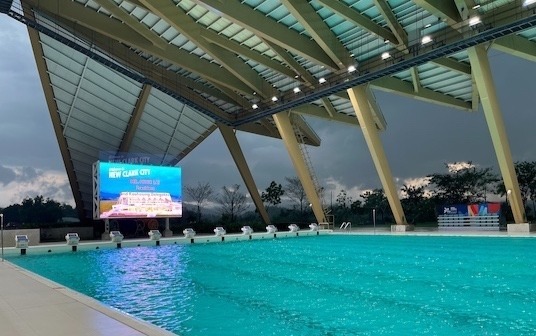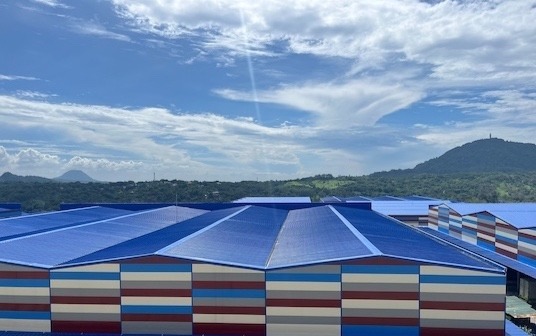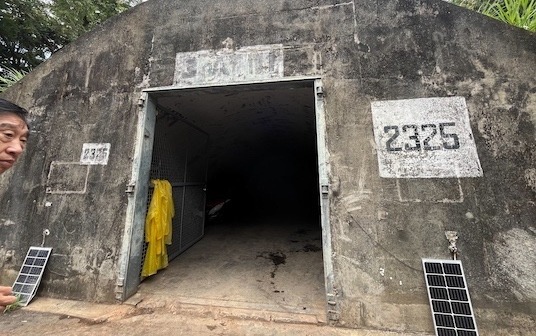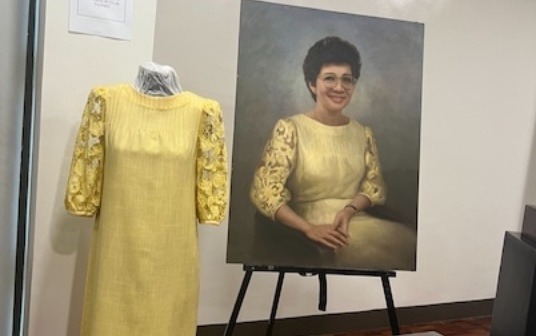Event | Tarlac Agricultural University (TAU) Bamboo Park Business Visit
"Special thanks to the Taiwan-Philippines Chamber of Commerce for the invitation. Our Astray representatives, along with the delegation from the Kaohsiung Linhai Industrial Park, traveled to the Philippines to seek investment and cooperation opportunities. They explored the resource advantages and sustainability potential of the Philippines."
Business Trip to the Philippines
Disclaimer: I’m not a pro in this field, so the following recorded are based on my observation during the 5-day trip.
At the invitation of Philippine Chamber of Commerce and Industry (PCCI), I went to Tarlac, the Philippines, on behalf of Astray, with a delegation consisting of the heads in Kaohsiung Linhai Industrial Park. The purpose of this trip is to seek investment and collaboration opportunities with the Philippines.
First a bit of a background. Taiwan is one of the most industrially advanced countries in the world. However, Taiwan faces the problem as most developed countries do—the lack of workforce, and also limited space. On the contrary, the Philippines, a geologically close neighbor, possesses way more “raw” lands, materials, and manpower. What I mean by “raw” is based on my observation these days and talks with the group. In the Philippines, there are still plenty of non-industrialized land (which is not bad at all and I’ll come back later), and many people here lack the technique to really make full use of the abundant resources. So from this objective perspective, Taiwan and the Philippines could actually compensate one another. Therefore, we were invited here to look at the possibilities of exchanges and investment.
As most of the group members are golfers, 3 non-golfers including me were arranged to other sites such as galleries, museums, and some governmental building to have a grasp on the development of the Philippines, especially Tarlac province, from a different and more diverse perspective. The most impressive one would be the Acquino museum. We got to see how the Philippines got out of the dictatorship and came to be a country that is thriving towards democracy. This might not seem to be directly linked to sustainability, but I think getting informed historically more or less corresponds to our 3-phased sustainability principle: “Live well, give people around you a decent life, and build up an appropriate environment for future generations.” Looking back to history allows us to take a glance at how our forefathers practiced sustainability (though the term probably wasn’t coined yet then) and provided us with what we have now.
In the afternoon, the whole group went to the bamboo forest park of Tarlac Agricultural University (TAU). The Philippines is putting efforts into growing bamboos. Bamboo is a efficient source of clean energy. A full-grown bamboo takes 5 years, relatively short compared to usual trees. Bamboos are versatile. They can be made into building materials, crafts, and even coals to burn. Bamboo can go beyond zero carbon emission to minus carbon emission. Unfortunately, the Philippines for now does not have a comprehensive system to verify the carbon footprint. This is exactly where Astray can step in. A fellow Taiwanese company head then decided to sign an MOU to help them calculate carbon footprint, and buy the carbon credits of the bamboo forest.
On the third day, as my non-golfer partner is a consultant that specializes in energy and is looking for investment opportunities, he brought me along to meet with a Taiwanese businessman who rented a 200-hectare land to develop beside the Subic Bay. That was definitely the HIGHLIGHT of these days!!! The area was once the US marine military base. However, due to the shift in policy coupled with an eruption of volcano, the US drew back from the Subic Bay. The US left plenty of ammunitions in this area, and as they leeft, those went wasted. Therefore, after the ammunitions were transported out of the area , and some of the heavy metals were recycled, this area was rented to several foreign developers. We got a SUV tour in the “jungles,” where the US hid their arsenals, and that was one of the most thrilling experience in my life. But, back to the theme, we (actually them) came to advise the Taiwanese businessman on how to make most benefits from the natural resources this area possesses. As mentioned, the Philippines is rich in undeveloped or no land, which would serve perfectly in providing solar energies in an era where “carbon footprint” is a buzzword. However, the Filipino government is not yet willing to invest in solar electricity because they don’t really need such huge amount of electricity. According to Mr. Consultant, this is exactly why this area should fight for the building of data center. Data center is a energy consuming monster. With the US planning to come back and station here once again to lock the first island chain against China, data center would be needed. Therefore, if the data center is built by the Subic Bay, considerable amount of energy would be needed. That way, the non-industrialized land could serve as a solar farm, and thereby created a green-powered data center, complying with the world trend.
In the afternoon, we visited the green city New Clark City (NCC). As metro Manila is troubled with congestion, NCC was built to be the back-up administrative center. NCC situates on a high elevation, and is further to the falt than Manila is, therefore, it is more natural disaster resilient. Probably due to its relatively late development, we saw hardly anyone other than the staff there in NCC. We also saw standard swimming pools, diving venues, sport fields, and even athletic villages. Parts of NCC was also built to hold great sport events, and several events such as SEA games were held there as well. However, due to the heavy rain, we basically passed by.
The fourth day was probably the most important day in our trip. In the afternoon, MOUs would be signed between the Linhai Industrial Park and the Tarlac Province. Therefore, the morning schedule was relaxing. Golfers were at the golf field again, and we went to the largest chained mall SM, in preparation for the upcoming 6-hour business time.
It was the most formal situation of this trip. The Filippino governmental as well as academic representatives gave presentations, showcasing their efforts in development. They introduced their stregths to attrack investors. They mentioned their still-building industrial parks, their natural resources, and their will to collaborate. At the end, the MOU was signed, and we enjoyed our last dinner with them in the Philippines.
In the next morning, a short farewell breakfast was held in the hotel. Professor Wu Ying Ming was there and he sincerely encouraged exchanges between the Philippines and Taiwan.




